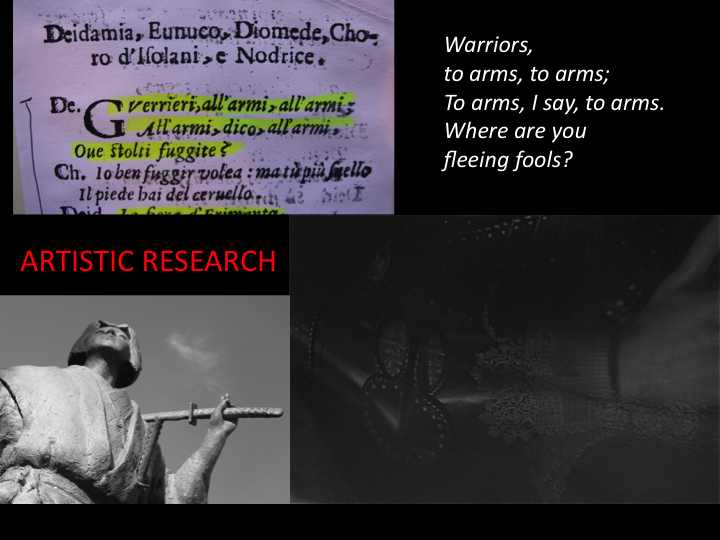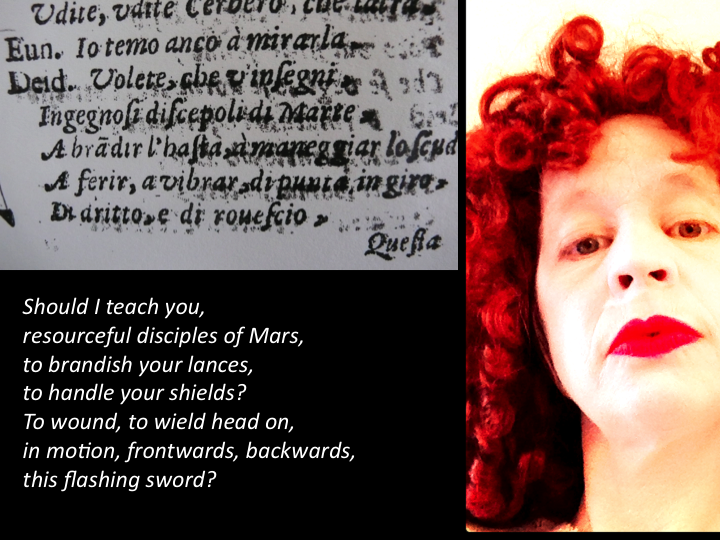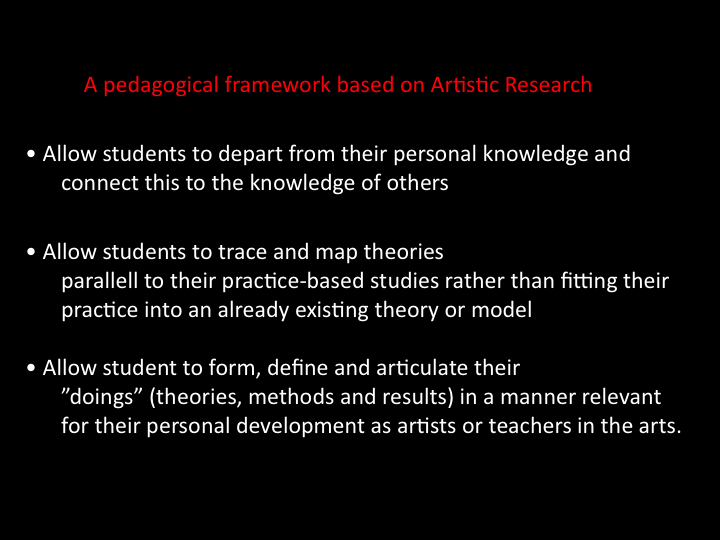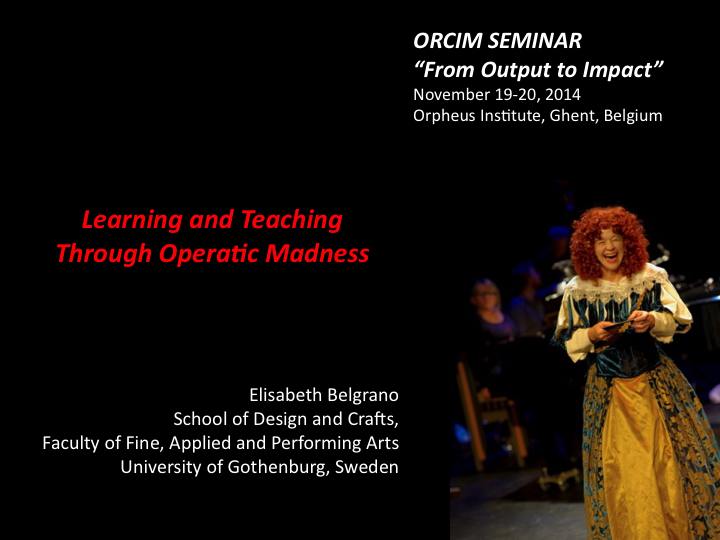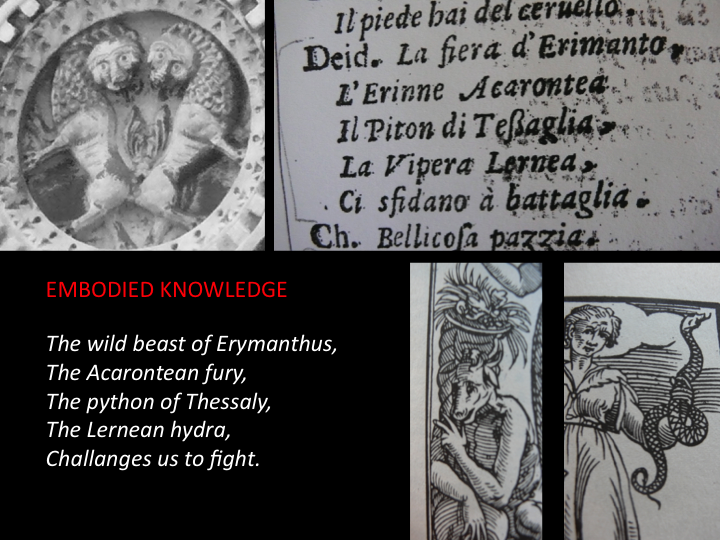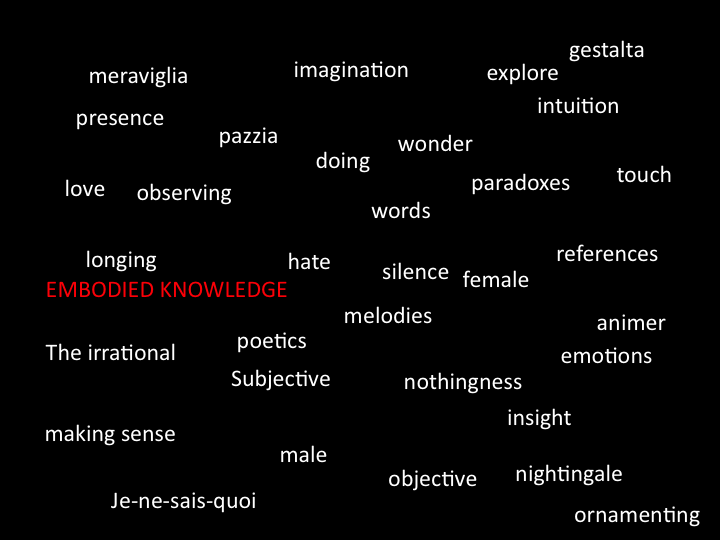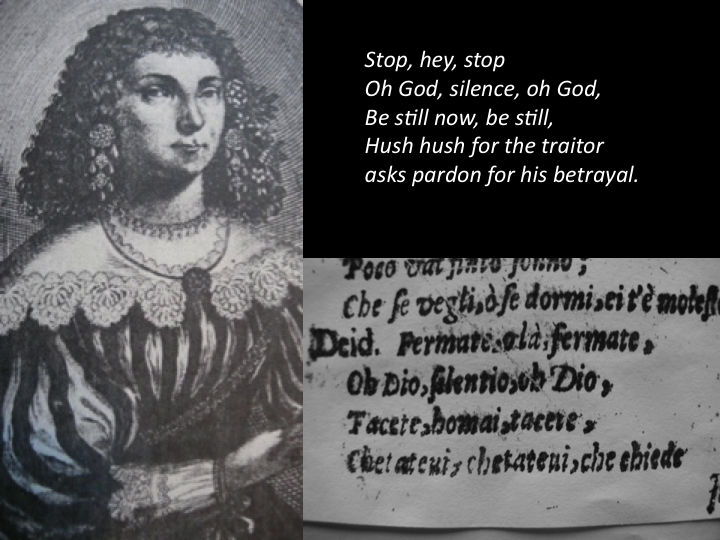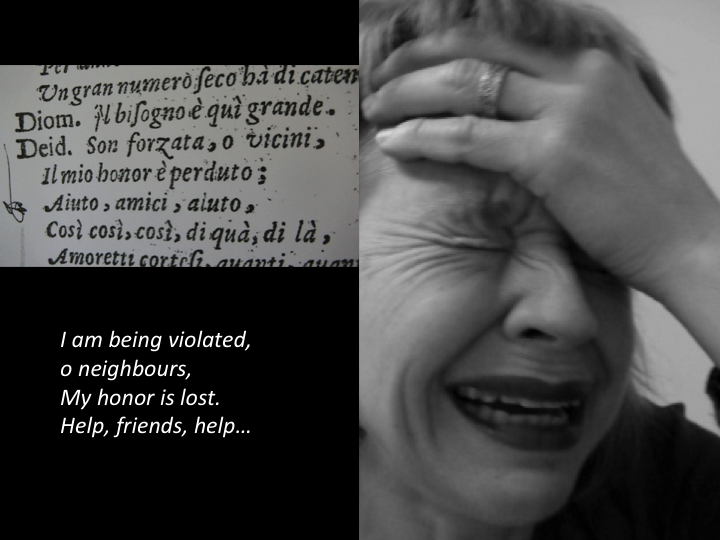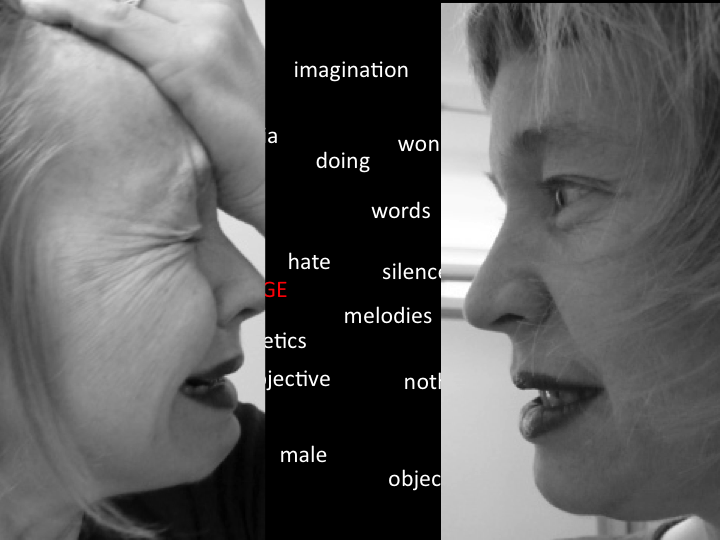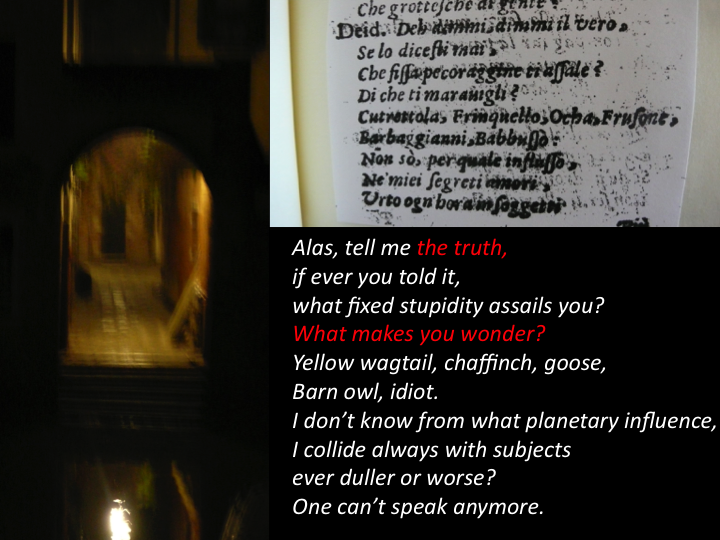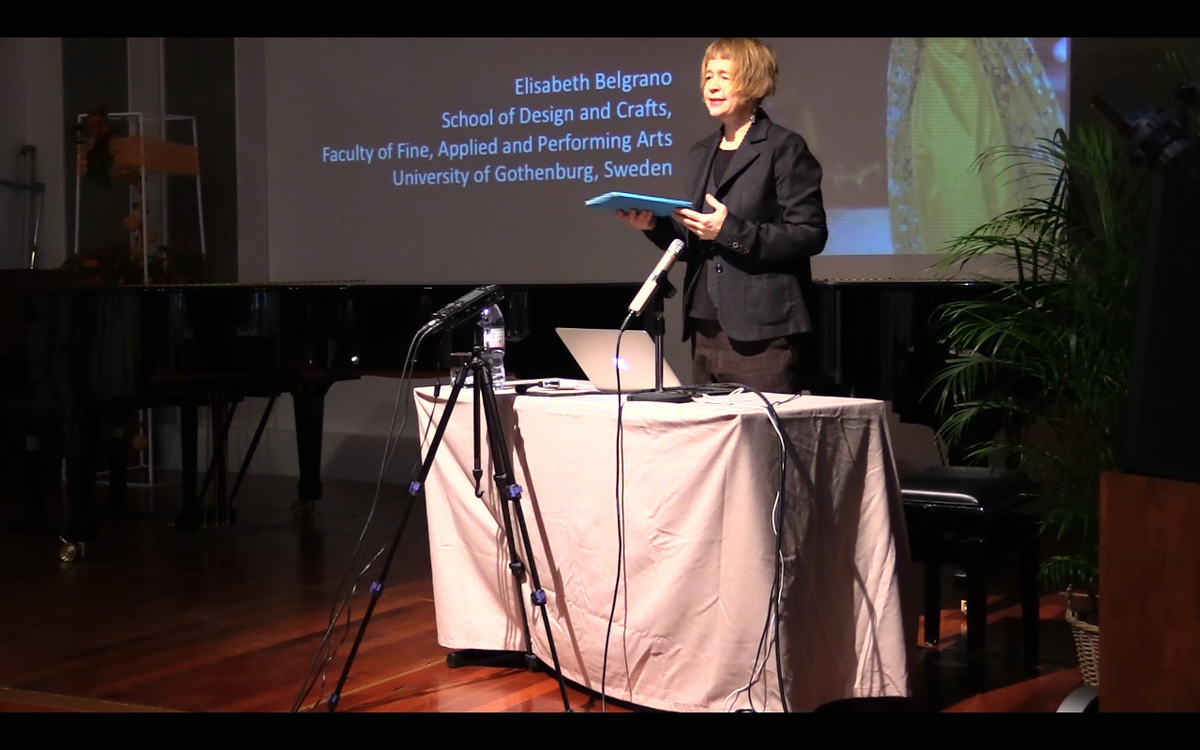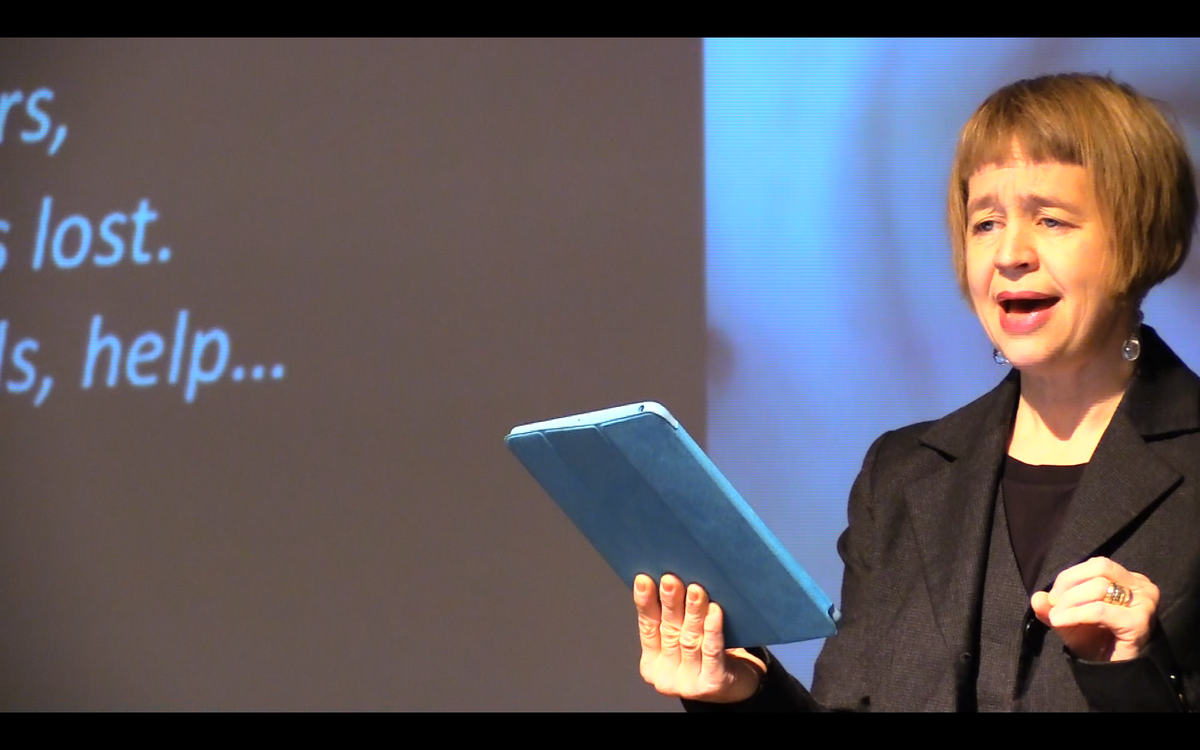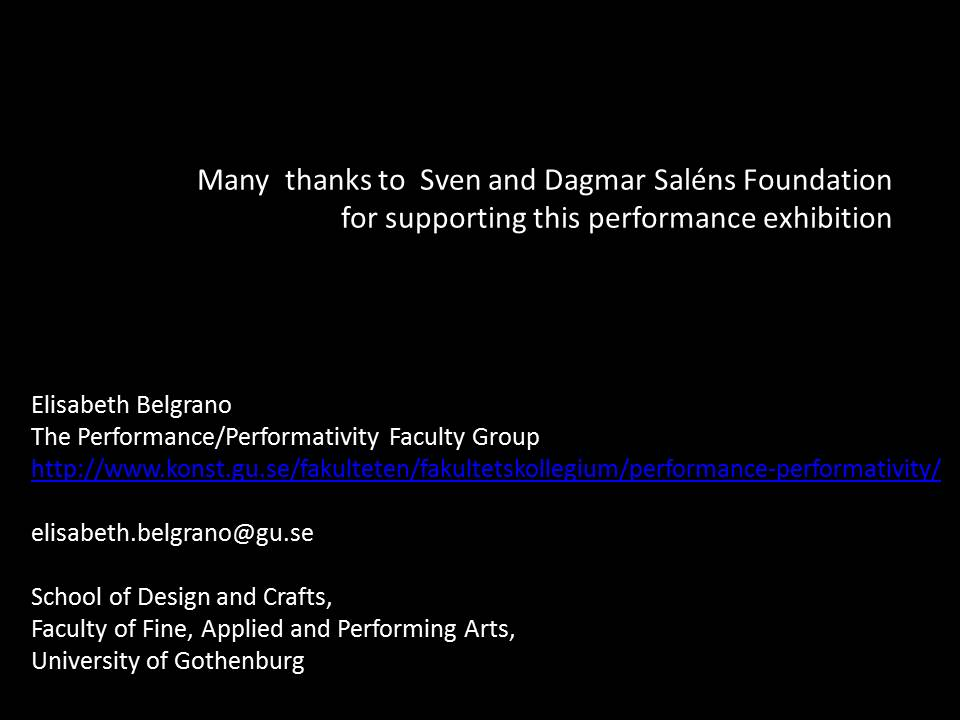Artistic Research has in recent years managed to establish itself as an academic research discipline of its own, but there is still a need for developing a closer link between Artistic Research and higher performing arts education. Based on this fact, the question I like to reflect upon in this performance presentation is, if words can explain the essence of a pure artistic and aesthetic experience, how can these words be organized and used in order to establish a new pedagogical framework in higher performing arts education?
The results of Artistic Research can be understood as formulations of metaphors presenting the artist’s subjective perception of aesthetic experiences. From recent results in the form of artistic dissertations one can observe how a sensuous language is developed through bodily practices and consciously controlled attention to the first person methods applied in the artistic research process. This language, based on a 'felt' knowledge (Klein, 2010) can be viewed as a language ‘in between’ the presentation of a pure artistic performance act, and the objective art-theories developed by external observers. In this paper my aim is to define a pedagogical framework organized through the metaphor of a 17th century Venetian operatic mad scene by analyzing recent artistic dissertations linking these to my own personal experiences of doctoral studies in artistic research, as well as from supervising students in the music teacher program at the Academy of Music and Drama, University of Gothenburg, Sweden.
La fiera d’Erimanto,
L’Erinne Acarontea.
Il piton di Tessaglia,
La vipera Lernea,
Ci sfidono Battaglia….
I build a bank of beasts and beauties,
Departing from my DOING…
Consciously and sensuously observing every word and melody
Diffracting
Mattering,
Making connections and analogies,
Searching for references
That can expand my inborn
And already accumulated knowledge.
I follow intuition and imagination.
Making sense of paradoxes and the irrational.
Entering the object of my study,
Every detail and every passion…
Elena Bella son io
Tu paride Troiano
Sù rapiscimi, sù
Ladro melenso
Stendi stendi la mano.
Ti picchi? Ti rannicchi? T’incrocicchi?
Who am I?
A singer… a researcher…
A warrior… Beautiful Helen… an abandoned lover…
I am all and nothing at the same time…
Or simply mad?
What about TRUTH? What can be said?
Tell me
Deh dimmi, dimmi il vero,
Se lo dicesti mai,
Che fissa pecoraggine ti assale?
Deh che ti meravigli?
Cutrettolo, Fringuello, Ocha, Frusone, Barbaggianni, Babbusso:
Non sò per quale influsso,
Ne’miei segreti amori,
Urto ogn hora in ssoggetti…. Piu stolide peggiori?
Non si puo più parlare…
”I remember the year I don’t remember,
When a harpsichord was tuned
For a Spanish Pavaniglia
With a Galiarda by Santin of Parma,
For that something
Then the lasagne,
The macaroni
And the polenta
Was dressed for mourning,
Not being able to suffer
That the Gatta Fura
Was a friend of the sweet girls of Algeria;
Clearly as the caliph of Egypt prefer,
It was concluded
Tomorrow morning
both would be placed in pillary.”
This short text captures the essence
Of a mad scene.
The words are expressed by Isabella
In the 16th century comedy
La Pazzia d’Isabella (The Madness of Isabella).
Isabella is running wild through the city singing
And speaking in a mixture of languages.
Her acts and her speech seem totally out of proportion.
When analyzing the form on a deeper level
The chaotic system appears to carry its own conscious meaning.
The aim of the mad scene
Was in fact to stand up against a Renaissance ideal,
By performing an up-side-down anti-rhetorical opposition.
In 17th century Venice
The operatic mad scene appeared in a slightly different shape
Introducing the ‘feigned madness’,
Meaning that mad could be sane
Or sane could be mad in the same instant.
Paradoxes were placed next to one another in the same scene.
Words were exaggerated and emphasized
In the most unexpected manners.
At the same time, when these words were expressed
They signified a pure essential reality –
Not to be understood/questioned as such
(meaning words in a context)…
But understood (and questioned) as performative actions.
The irrationality was in a second transferred into pure reason.
Through the operatic mad scene
The singing actor seduced the audience to a state of wonder.
And wonder was in fact a keyword for the whole opera-genre,
Which by the end of the 17th century
Had established itself as a public artistic art form.
The mad scene within an opera was an entity in itself.
It represented a form –
Freely structured,
And somehow independent from the content of the operatic drama.
Through wonder,
The researching artist curiously aim at going beyond
The pure artistic performance act,
Searching to tackle the classic questions What? How? and Why?
The artistic (and sometimes poetic) text-driven answers and findings
Perform a (new-for-the-moment) knowledge
That could possibly set matters up-side-down
Or surprise the audience by its strangeness and its madness.
Let me give you some samples of how the mad scene and artistic research Diffractively can be understood through one another.
1. The irrational structure of the mad scene
Has a clear beginning and a clear end,…
But in between the unexpected happens.
The same can be said about artistic research (here after named AR).
2. Every word in the mad scene is performed as an entity and a world of its own.
In AR a single phenomena or matter
Subject to an inquiry,
Can be turned inside out by the researcher.
Seemingly disconnected.
3. A pattern of the unimaginable and the senseless
Can be analyzed in a retrospect study of the mad scene.
In AR only when the actual ‘making’ or ‘doing’ has been accomplished
Can a system of performative frames be observed
Through a methodological mapping of the already ‘made’.
4. In the mad scene intuition and improvisation plays an important role,
And the actor has to be ready to react and intra-act with any external ‘disturbances’.
In AR theoretical concepts include a much broader and open understanding of references than in traditional academic research, meaning that any possible matter or factor relevant for extending the knowledge of the targeted theme or topic should be included
Ah so ben io
Qual di racchiuso pianto in mesto core
Fa lago al mio dolore.
Verga tiranna ignobile
Recide altri papaveri;
Per questo io resto immobile,
Fra voi sozzi cadaveri.
Il foco merto ardetemi:
Il sepolcro apprestatemi:
Donne care, piangetem;
Pace all’alma pregatemi
Guerrieri, all’armi, all’armi;
All armi, dico, all’armi,
Ove stolti fuggite?
Words…words…. WOOORDS….
Making NOISE.
Powerful tools.
Touching my mind…
And when touched
New words, new images, new affects
Are set in motion
The words I sing
Matter to me.
…
They make me aware.
Never mind what language it may be…
As long as I have made them part of who I am.
In this paper I will point out some ideas
Acknowledged as significant common matters in artistic dissertations
Presented at the Univ. of Gothenburg during the past five years.
1. The subjective voice of the artist.
2. Application of theories acknowledged through artistic DOING.
3. The practice itself as an artistic method AND artistic research result.
4. Textual presentations and formulations, often presented as essays, reflecting the analytical and descriptive mind of the artist, including clearly formulated explanations, while at the same time a sensuous and poetic language often is incorporated.
Letting it out on stage for anyone to take over and
Continuing to construct their own banks of beasts and beauties.
Letting it out on stage for anyone to take over and
Continuing to construct their own banks of beasts and beauties.
Volete che v’insegni
Ingegnoso discepoli di Marte,
A brandir l’hasta e maneggiar lo scudo.
A ferir a vibrar, di punto in giro,
Di dritto e di rovescio
Questa fulminea spada?
A farsi piazza, e strada
Sovra i corpi nemici?
Ecco un fendente
Come in testa su dona.
My background?
Lessons in singing,
Gesturing, ornamenting, speaking,
Pronouncing,
Reading my music and my score.
But I didn’t get the complex feeling of context,
Understanding relevant concepts and theories.
Never, really, never at school.
Somehow practice didn’t include theory.
Practice …practice….PRAAAAA….CCCTICE…
Now, as a supervisor of students in the music performance
And students in the teacher training program in Music
I can’t ignore the imbalance between practice and theory.
I have come to realize
That many young students
Fear not being perfect
And skillful enough.
Pressed and stressed to own the perfect technique.
To such a degree that they forget about aesthetics,
Or whatever that might be…
And the music teacher-to-become -students,
Who entered the program with both love and enthusiasm for music,
Have during their studies been taught to depart from socio-cultural theories and Remain objective in their studies to such a degree that I have to ask my self:
What happed with love and passion for presence, emotions and touch?
What happened to the performer
Aita, aita aita
Ohime quest’onda, ohime!
E l’ultima per me.
Dunque pietade in voi non ha piu luogo?
Non vedete ch’affogo?
Help me,
I screamed
HELP
Can’t you see you’ve DROWNED ME…
IN THEORIES…REFERNCES…AND FOOTNOTES!!!!???
Where is my voice?... When do I sing?...
What do I express?...
Remember that a statue of a woman
Calling for help,
Or a concept …
Or a word
Have the same powers to help
Explaining the qualities of beauty and disgust.
Lets include it all,
As was done in Venice in 1642.
When NOTHINGNESS
– or il NIENTE-
Was debated in academic circles.
When NOTHINGNESS was described
Through metaphors of DEATH, DREAM and SLEEP.
Or when NOTHINGNESS –
As the abstraction of something that can’t be explained –
Was embodied by a singer in a mad scene.
A scene where both love, fire, suffering
And tears appeared in the same moment.
Fermate, o la, fermate,
O dimmi, dimmi il vero
Tacete, homai, tacete,
Che tatevi, chetatevi che chiede
Il traditor perdono
Della schernita fede
Stop, listen, oh God, we are asked to remain in silence….
To listen, see, and to reflect….
Performance, reflection, relating and representing are four keywords highlighted in Harald Stenström’s dissertation in musical performance (Stenström, 2009).
It is curious to notice how many ways these strategies can be twisted,
turned around and performed.
Elena Bella son io
Tu paride Troiano
Sù rapiscimi, sù
Ladro melenso
Stendi stendi la mano.
Ti picchi? Ti rannicchi? T’incrocicchi?
Who am I?
A singer… a researcher…
A warrior… Beautiful Helen… an abandoned lover…
I am all and nothing at the same time…
Or simply mad?
What about TRUTH? What can be said?
Tell me
A pedagogical framework based on artistic research
Should potentially
- ALLOW the students to depart from their personal knowledge
and connect this to the knowledge of others.
- ALLOW students to trace and map theories
parallel to their practice-based studies,
rather than fitting their practice into an already existing theory or model.
-ALLOW students to form, define and articulate their ‘doings’
(theories, methods and results) in a manner relevant to their personal development as artists or teachers in the arts.
One last thought before all is over…
If words can explain
Artistic and aesthetic expression,
HOW can these words then be organized
And used in order to establish
A pedagogical framework
In higher performing arts education?
Son forzata, o vicini,
Il mio honor e perduto.
Perhaps I walk on land I should avoid.
Risking to losing my honor
Getting lost,
Committing errors,
Meeting critical voices…
But what is critique, really?
Karen Barad, professor in physics and gender studies tells us:
“I am not interested in critique.
In my opinion critique is over-rated, over-emphasized.
…
Critique has been a tool of choice for so long,
and our students find themselves so well-trained in critique that they can spit out a critique with the push of a button. Critique is too easy …
… all too often not a deconstructive practice, …
… but a destructive practice meant to dismiss,
to turn aside, to put someone or something down – another scholar, another feminist, another discipline, another approach etc.
So this is a practice of negativity
that I think is about subtraction, distancing and othering.”
As an answer to such a practice of negativity,
Barad proposes diffractive method…
(alt. a method of diffracting)
“a method of diffractively reading insights through one another, building new insights, and attentively and carefully reading for differences that matter in their fine details”.
In my practice of diffracting madness,
By entering an entanglement
of seemingly senseless words, references, experience
My conscious awareness of differences and paradoxes
Has made me understand
That my acts of performing the mad or the false mad
Or any consciously observed performative act
Can touch upon any essential issues
Being part of the challenge humanity is facing right now.
As artistic researchers we need to trust in our own madness,
Our own languages and acts,
Sometimes crashing into academic walls of rules and regulations
Knowing that THE WAY
we diffractively read our DOINGS
and practices.
HOW we present our knowledge
Can have an essential impact - anywhere.
dr. Elisabeth Belgrano
School of Design and Crafts, Faculty of Fine, Applied and Performing Arts, University of Gothenburg, Sweden
Elisabeth Belgrano has been specializing in vocal Baroque music, with a special interest in French and Italian 17th century music. She has been touring and presenting her performance research at festivals and conferences in Europe as well as in the US. The CD ’Eclatante Amarante - a portrait of the French Singer Anne Chabaceau de La Barre (1628-1688)’ from 2004 is reflecting Belgrano’s interest for female vocal expression during the 17th century, but also her passion for investigating and experimenting with 17th century historical music sources, through practice-based performance research. The recording was supported by Barbro Osher Pro Suecia Foundation. In 2005 she received the prestigious Noah Greenberg Award from the American Musicological Society ”for distinguished contribution to the study and performance of early music.” In 2011
Belgrano was awarded a PhD from University of Gothenburg, for her thesis ”Lasciatemi morire” o farò ”La Finta Pazza”: Embodying Vocal Nothingness in 17th Century Operatic Laments and Mad Scenes - the first artistic PhD in Sweden within the field of Performance in Theatre and Music Drama.
